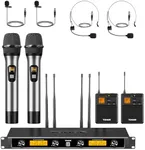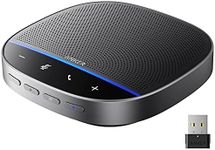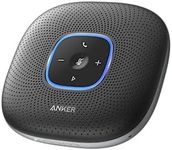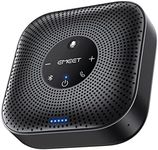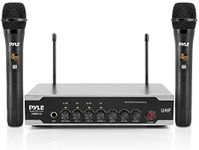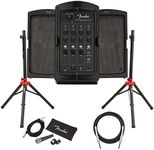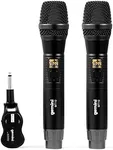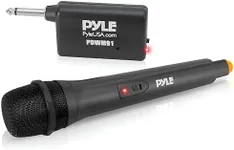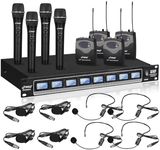Buying Guide for the Best Conference Microphone Systems
Choosing the right conference microphone system is crucial for ensuring clear communication during meetings, presentations, and conferences. The right system can make a significant difference in audio quality, ease of use, and overall effectiveness of your communication setup. Here are some key specifications to consider when selecting a conference microphone system, along with explanations to help you make an informed decision.Microphone TypeThe type of microphone is important because it determines how the microphone picks up sound. Common types include omnidirectional, unidirectional, and bidirectional. Omnidirectional microphones pick up sound from all directions, making them suitable for round-table discussions. Unidirectional microphones focus on sound from one direction, ideal for presentations or when the speaker is stationary. Bidirectional microphones pick up sound from two opposite directions, useful for face-to-face interviews. Choose the type based on the typical setup and dynamics of your meetings.
Frequency ResponseFrequency response refers to the range of frequencies a microphone can pick up. A wider frequency response means the microphone can capture a broader range of sounds, from deep bass to high treble. For conference microphones, a range of 100 Hz to 10 kHz is usually sufficient to capture clear speech. If your meetings involve capturing a wider range of sounds, such as music or high-quality audio, consider a microphone with a broader frequency response.
ConnectivityConnectivity options include wired and wireless systems. Wired microphones offer a stable and interference-free connection, making them reliable for fixed setups. Wireless microphones provide flexibility and mobility, which is beneficial for dynamic environments where speakers move around. Consider the layout of your conference room and the need for mobility when choosing between wired and wireless systems.
Pickup PatternThe pickup pattern determines the area around the microphone from which sound is captured. Common patterns include cardioid, supercardioid, and omnidirectional. Cardioid microphones capture sound primarily from the front, reducing background noise, making them ideal for individual speakers. Supercardioid microphones have a narrower pickup pattern, further isolating the speaker from ambient noise. Omnidirectional microphones capture sound from all directions, suitable for group discussions. Choose the pickup pattern based on the number of participants and the level of background noise in your environment.
SensitivitySensitivity indicates how well the microphone can pick up quiet sounds. Higher sensitivity microphones can capture softer voices and subtle sounds, which is important in large rooms or when participants speak softly. However, high sensitivity can also pick up unwanted background noise. If your conference room is quiet and you need to capture every detail, opt for a higher sensitivity microphone. For noisier environments, a lower sensitivity microphone might be more appropriate.
Signal-to-Noise Ratio (SNR)The signal-to-noise ratio measures the level of the desired signal (such as a speaker's voice) compared to the level of background noise. A higher SNR means clearer audio with less background noise. For conference microphones, an SNR of 60 dB or higher is generally good. If your meetings are held in noisy environments, look for microphones with a higher SNR to ensure clear communication.
Durability and Build QualityDurability and build quality are important for ensuring the longevity of your microphone system, especially if it will be used frequently or transported often. Look for microphones made from robust materials and with a solid construction. Consider the environment in which the microphones will be used and choose a system that can withstand the wear and tear of regular use.
Ease of UseEase of use includes factors such as setup, operation, and maintenance. A user-friendly system can save time and reduce the likelihood of technical issues during important meetings. Look for systems with intuitive controls, clear instructions, and minimal setup requirements. Consider the technical expertise of the users and choose a system that matches their comfort level.
